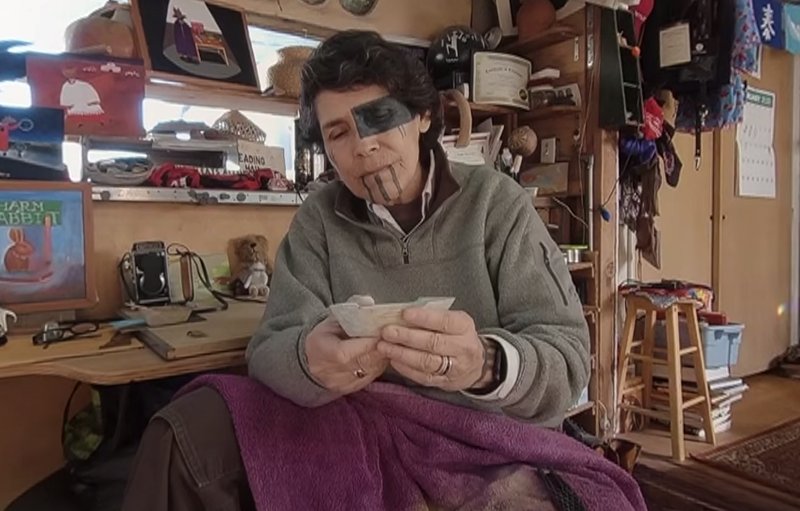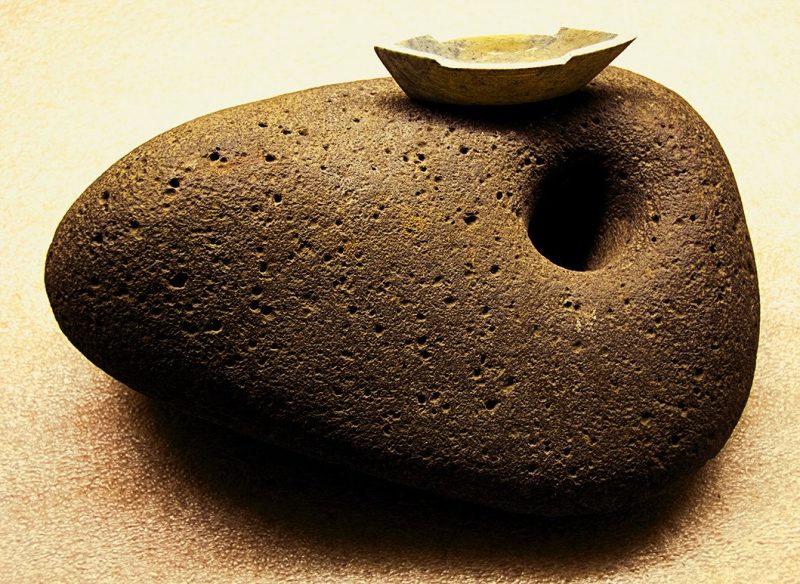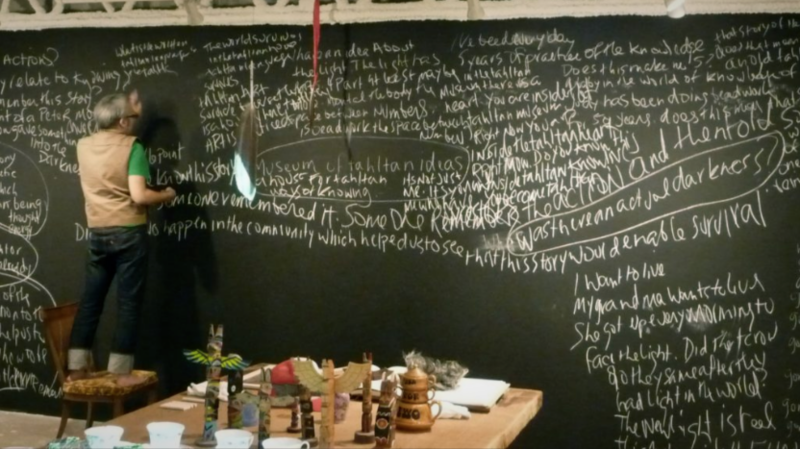Pushing Back against Salvage Anthropology: In Conversation

Pushing Back against Salvage Anthropology: In Conversation was created by Kristin Cammorata, Lucero Garcia, Milly Newton, and Ava Whist as part of History of Art 192CU: Social Justice and Museum Studies during Spring 2021.
“The origins of modern archives are intimately linked to colonial logics of vanishing races, imperial projects of collection, and colonial nation-making strategies… the archive was simultaneously a physical place to store Indigenous materials and a political representation of policies of displacement and destruction of Indigenous cultural practices, languages, and ways of life.”
– Kimberly Christen, Relationship, Not Records: Digital Heritage and the Ethics of Sharing Indigenous Knowledge Online (2018)
It cannot be understated how deeply the origins of anthropology and its archives are tied to an ongoing legacy of colonization in North America. Early anthropologists, overwhelmingly white and male—including those who pioneered the field here at UC Berkeley—believed that colonization and contact with modernity would surely spell the end for Indigenous groups. They set out to “salvage” what they could from these cultures, seeing assimilation and destruction as all but a given. Entire collections were built on these faulty assumptions.
Salvage anthropology, the name given to this form of early anthropology, acted in the service of colonialism to position Native American groups as part of the past, without agency, and as passive instead of active agents of the world at large. We not agree that anthropologists were wrong in their assumptions. Native American people and cultures have not disappeared.
In Conversation
UC Berkeley still holds a vast quantity of important cultural material that was collected, often without consent or under duress, as part of the project of salvage. The history of colonization carries on through these material records. How might we approach and address the museum and the persisting, harmful legacy of salvage anthropology? We have been fortunate to speak with L. Frank and Peter Morin, and we invite you to join us in conversation.
In Conversation with L. Frank


L. Frank is a Tongva-Ajachmem artist, tribal scholar, and indigenous language activist. In her practice she has used varied mediums, including writing, cartoon, soapstone carving, and painting.
L. Frank has done vital work in language advocacy and revitalization in California. She works with collections in the Hearst Museum to connect with objects and piece together Indigenous languages.
In our interview with L. Frank we discussed her work with the collections, care in museum spaces, rematriation, reindigenizing, and disrupting narratives of salvage anthropology.
Transcription of the Interview
In Conversation with Peter Morin

Peter Morin is a Tahlan Nation artist, author, curator and professor, who is currently teaching at the Ontario College of Art and Design.
His practice addresses language, decolonization, Indigenous identity, the museum institution, intergenerational trauma, and art as transformation.
He has shown in numerous solo and group exhibition as well as curating exhibitions. Our class, HA192CU, learned from Morin’s 2011 catalogue Peter Morin’s Museum: An Installation with Performances, which accompanied his exhibition at the Museum of Anthropology at the University of British Colombia.
Transcription of the Interview
Continuing the Conversation
The transformation of a museum is not possible without the conversation put to action. As L. Frank suggests, the museum as an institution is not a nebulous entity but rather a collective of people with whom you can talk and collaborate. This in mind, the goal of re-indigenizing museum spaces and collections is to continue the conversation and take real steps towards the possible futures of museums and museum practice.
What needs to be re-evaluated in the process of re-indigenization is the purpose and functions of the museum institution. Policy-changing, exhibitions, and caring for collections are potential avenues through which a new purpose for the museum can be realized. Enacting change is more than greeting Indigenous patrons at the door. It goes beyond asking what color the artist wants the walls to be. It is the active and substantial inclusion of Indigenous voices and perspectives when handling objects and putting exhibits together. This also applies to the technical practices of a museum in terms of rethinking policy to make the museum accessible to Indigenous scholars and Indigenous communities. How can we adopt protocols that are inclusive? How can we create spaces where the lives and spirits of objects and people can be fully welcomed?
Here are a few questions meant to encourage a continuing conversation and thoughtful discussion of pushing back against salvage anthropology:
- How can a museum better accommodate accessibility with respect to culture and meaning for groups who historically have been excluded from the space?
- How does caring factor into collecting and exhibiting as well as collaborations between museums and artists? How can one care for objects outside scientific approaches and practices, and what might these changes in practice yield for future museum projects?
- How can curatorial practice in the future adopt a collaborative approach that prioritizes stewardship between the artist and the museum?
- In order to bring life into the museum space, what is at stake? What are the practices or traditions of the museum institution that possibly need to be abandoned to make re-indigenization a reality for the future of museums?
- To quote Peter Morin: “What have you never seen in a museum?”
- What can higher education institutions change and adapt alongside the museum to challenge the scholarship and epistemology which perpetuates salvage anthropology?
Endnotes
- Cairns, Puawai. “Decolonisation: We Aren’t Going to Save You.” American Alliance of Museums, 2018.
- Hicks, Dan. The Brutish Museum: The Benin Bronzes, Colonial Violence and Cultural Restitution, Pluto Press, 2020.
- Morin, Peter, Duffek, Karen. “Peter Morin’s Museum: An Installation with Performances,” Soft Power. University of British Columbia, Museum of Anthropology, 2011.
- Sanders, Nina. “Foreword.” Apsáalooke Women and Warriors. Neubauer Collegium, 2020
- William R. Seaburg in Collecting Culture: The Practice and Ideology of of Salvage Anthropology in Western Oregon, 1877 – 1942, Dissertation, University of Washington, 1994.
